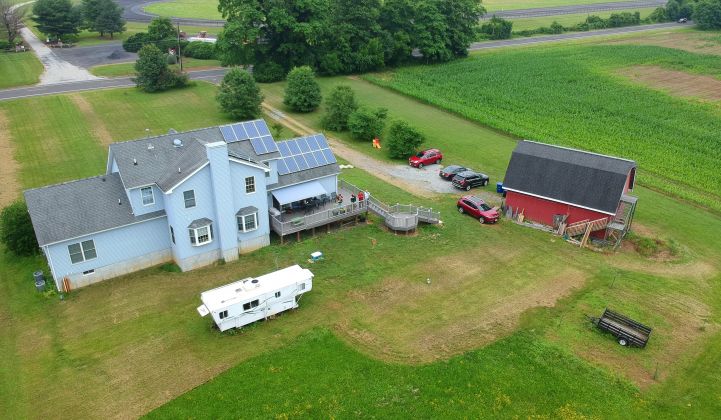The New Jersey Board of Public Utilities approved new solar incentives late last week, laying out the transition credit that will bridge the state's move from generous incentives to more moderate ones as it works to reach 100 percent clean energy by 2050.
Among the country's top 10 states for residential solar, New Jersey numbers among many successful markets now modulating solar incentives while continuing to work toward significant renewables goals.
In June, New Jersey unveiled its draft plan for 100 percent clean energy by 2050. Those targets build on the 2018 Clean Energy Act, which mandated that the current solar incentive program come to an end once the state reached 5.1 percent electricity from solar — a target it’s expected to meet next year.
Since December 2018, regulators have been working out the details of the successor solar incentive.
According to the BPU’s plan, New Jersey will move from the Solar Renewable Energy Certificate — earned after a project generates 1 megawatt-hour — to the new Transition Renewable Energy Certificate (TREC), which will have a fixed price over a 15-year period. Though the BPU is still determining exactly what that price will be, its decision will help determine the growth trajectory of New Jersey’s residential solar market, which has benefited in particular from SRECs.
“The transition…provides more visibility to the market given that the incentive will be less volatile than the current market-based SREC incentive,” said Austin Perea, a senior solar analyst at Wood Mackenzie Power & Renewables. “But the underlying fixed value of the incentive has yet to be determined, which looms as a larger issue.”
Market supply and demand determine SREC prices, but they’ve traded well above $200 over the last year. For the TREC program, the BPU floated a flat 15-year price of $152 or three years at $65 before prices jump to $189 for the next 12 years.
Though those prices are relatively comparable over the entire 15 years, the latter proposal, Perea said, “would present some sales and marketing challenges” because “economics and payback would be substantially reduced for customers in the initial years.”
The BPU said it will determine TREC pricing in a proceeding scheduled for early 2020.
Lower incentives are likely to constrain the state’s healthy residential market, currently led by Sunnova partner Trinity Solar and New Jersey-headquarted Momentum Solar, but regulators view the move as central to long-term sustainability.
New Jersey's incentive changes are designed to promote “a more effective, efficient and sustainable solar energy market,” said BPU President Joseph L. Fiordaliso in a statement.
“Ultimately, our aim is to balance ratepayer impacts with ensuring a thriving and stable solar industry," Fiordaliso said.
The challenge of continuing to encourage distributed solar deployment while keeping a lid on costs is being played out across a number of states, including nearby New York and Massachusetts.
When New York transitioned to its Value of Distributed Energy Resources tariff, the solar industry called the system “flawed” and claimed it undervalued the resource. Despite numerous tweaks over the last several years, the industry still has qualms.
In Massachusetts, the unveiling of the Solar Massachusetts Renewable Target led to a flood of projects. A September review of the program led to a laundry list of requests from the solar industry to improve it, though it’s already spurred significant investment and solar growth in the state.
Like New York and Massachusetts, the future of New Jersey's electricity landscape is further complicated by an anticipated surge of offshore wind power coming online over the next two decades.
New Jersey recently more than doubled its offshore wind target to 7.5 gigawatts by 2035, with Governor Phil Murphy claiming the state could get half of its electricity from sea-based wind farms by the mid-2030s.




